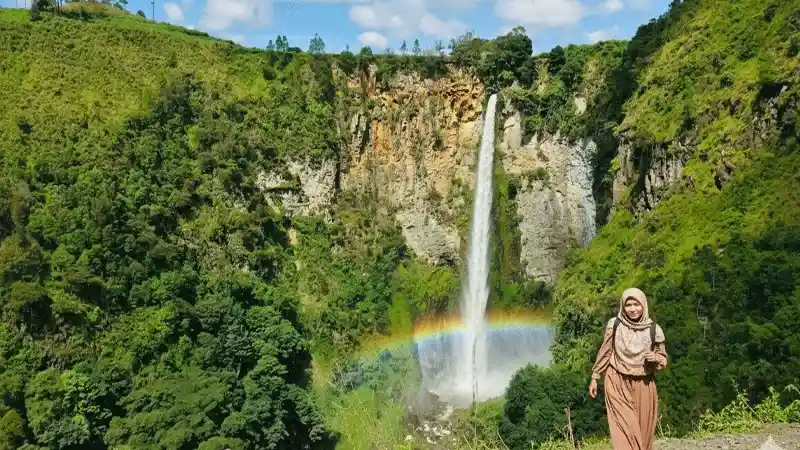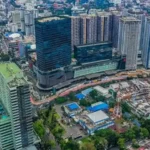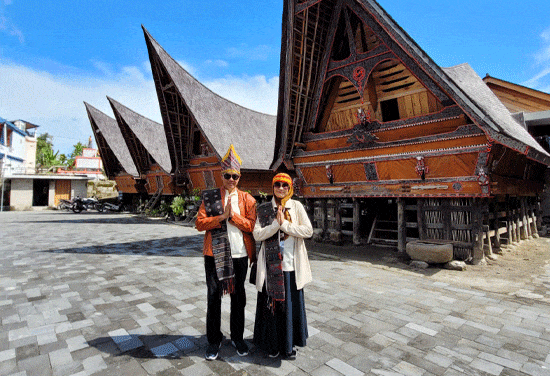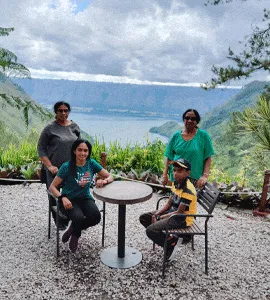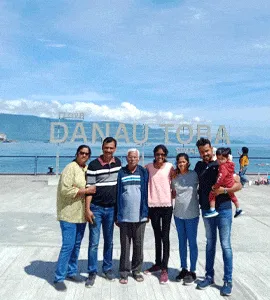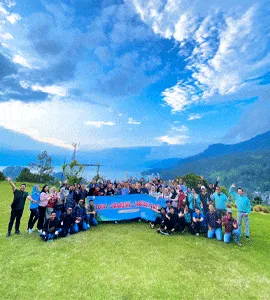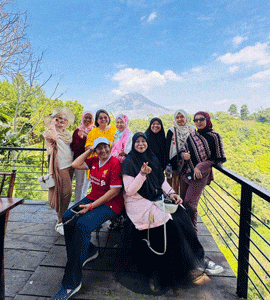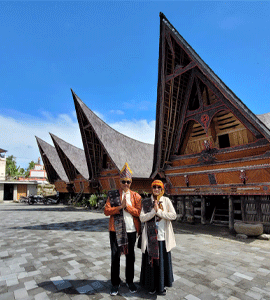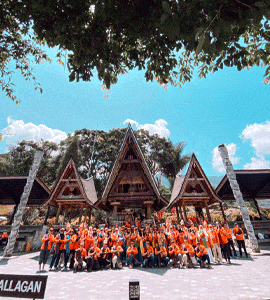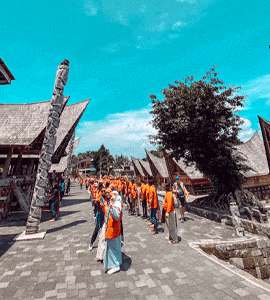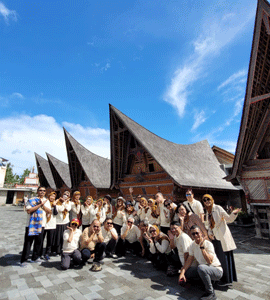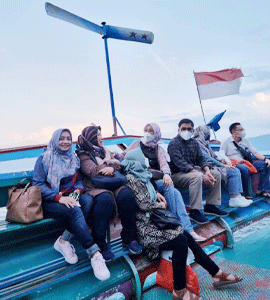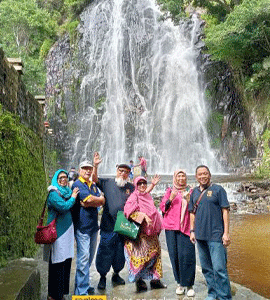Introduction to Sipiso-Piso Waterfall
Sipiso-Piso Waterfall is a mesmerizing natural wonder located in North Sumatra, Indonesia, not far from the renowned Lake Toba. Situated in the vicinity of the village of Tongging, this spectacular waterfall boasts a remarkable height of approximately 120 meters, making it one of the tallest waterfalls in Indonesia. The name “Sipiso-Piso” translates to “like a knife” in the local dialect, a reference to the waterfall’s slender, powerful stream that plunges dramatically into a deep gorge below.
This breathtaking waterfall is significant not only for its towering height but also for its immense visual appeal. Set against the backdrop of lush green hills and the expansive Lake Toba, Sipiso-Piso captivates visitors with its idyllic landscape. The pristine waters cascade over rocky cliffs, creating a serene atmosphere enhanced by the surrounding tropical vegetation. The unique geological features of the area, including the surrounding volcanic landscape and ancient rock formations, contribute to the enchanting scenery that draws travelers from around the globe.
Discovering Sipiso-Piso Waterfall offers an exceptional opportunity to connect with nature and appreciate the rich biodiversity found in this part of Indonesia. The area surrounding the waterfall is teeming with flora and fauna, making it an excellent spot for nature enthusiasts and photographers alike. Considering its spectacular beauty and ecological significance, it is no surprise that this waterfall is highly regarded as a must-visit destination. The combination of its magnificent height, scenic views, and geological features ensures that any visit to Sipiso-Piso Waterfall is truly unforgettable, adding to its status as one of Indonesia’s most beautiful natural attractions.
How to Get to Sipiso-Piso Waterfall
Reaching Sipiso-Piso Waterfall from Lake Toba or nearby towns can be achieved through various transportation options, ensuring convenience for travelers exploring this remarkable natural attraction. One popular choice is to hire a private car. This option not only provides flexibility in terms of travel time but also allows for a comfortable journey through the picturesque landscapes of North Sumatra. If you are opting for a private car, make sure to check the road conditions in advance to ensure a smooth ride, especially during the rainy season.
An alternative mode of transport is to rent a scooter, which can be an exhilarating experience for adventurous travelers. Renting a scooter allows for greater exploration of the surrounding area, providing the freedom to stop at scenic viewpoints along the route. However, it is important to ensure that you have a valid driving license and wear appropriate safety gear, as the roads can sometimes be winding and challenging.
Local taxis and rideshare services are also available for those who prefer not to drive. These services can be easily arranged from your accommodation in Lake Toba or nearby towns, offering a more relaxed option without the stress of navigating unfamiliar roads. When using a taxi service, confirm the fare beforehand to prevent surprises upon arrival.
The journey from Lake Toba to Sipiso-Piso Waterfall typically takes about 1.5 to 2 hours, depending on traffic conditions and the specific starting point. Travelers should take into account potential delays due to roadworks or weather changes. To ensure a successful trip, consider leaving early in the day to fully enjoy the breathtaking sights along the route and to have ample time to explore the waterfall upon arrival. Proper planning and selecting the right mode of transport will significantly enhance your experience while visiting the Sipiso-Piso Waterfall.
Best Time to Visit and What to Expect
Visiting Sipiso-Piso Waterfall near Lake Toba can be an enchanting experience, but timing your trip is crucial to fully enjoy its natural beauty. The ideal seasons to visit this stunning destination are generally considered to be during the dry months from May to September. During this period, rainfall is minimal, allowing the waterfall’s beauty to shine through with clear weather conditions suitable for outdoor activities. Conversely, the wet season, from October to April, can bring heavy rainfall, which may hinder accessibility and diminish visibility due to mist.
Travelers can expect a breathtaking spectacle upon reaching Sipiso-Piso, which is renowned for being one of the tallest waterfalls in Indonesia, cascading down from a height of around 120 meters. The surrounding area offers well-maintained hiking trails that provide opportunities for trekking through lush greenery and observing local wildlife. Numerous scenic viewpoints enable visitors to relish panoramic views of the waterfall from different angles, perfect for avid photographers looking to capture stunning images. Early morning visits can also reward travelers with magical sunrise views that often depict vibrant colors reflecting on the water.
Moreover, engaging with the local culture can enrich the experience at Sipiso-Piso. Visitors should be mindful of traditional customs, which may include respectful dress codes and etiquette when interacting with local communities. Understanding these cultural nuances not only enhances one’s visit but also fosters a spirit of respect and goodwill during the journey. In conclusion, planning your visit to coincide with the dry season will enable you to explore the beauty of Sipiso-Piso Waterfall to its fullest while immersing yourself in the local culture and natural splendor surrounding Lake Toba.
Tips for an Unforgettable Visit to Sipiso-Piso Waterfall
Visiting Sipiso-Piso Waterfall, one of the most spectacular natural wonders near Lake Toba, requires some preparation to ensure an unforgettable experience. First and foremost, dress appropriately for the jungle environment. Sturdy footwear is essential, as the paths can be rocky and steep. Lightweight, moisture-wicking clothing will help you stay comfortable through varying weather conditions.
When planning your visit, it is advisable to arrive early in the day to enjoy the serene atmosphere and capture the best photographs. The morning light can enhance the beauty of the waterfall, ensuring that your photos are both memorable and stunning. A camera or smartphone with sufficient battery life is paramount, as you will undoubtedly want to document this magnificent sight. If you enjoy photography, consider bringing along a tripod to capture long exposure shots of the water cascading down the cliffs.
Safety measures should also be a priority. Stay within designated paths and heed any local warnings to avoid accidents. Be particularly cautious near the water’s edge, as wet surfaces can be slippery. For those traveling with children, supervision is crucial to ensure their safety around the waterfall’s powerful flow.
For accommodations, there are several options nearby, ranging from budget guesthouses to mid-range hotels. These establishments not only provide a place to rest but often serve local cuisine. Be sure to explore the area’s culinary offerings, as the traditional food reflects the rich culture of the Batak people.
Additionally, engaging in guided tours can greatly enhance your experience. Knowledgeable guides can provide insights into the area’s ecology and history, along with respectful interaction tips with the local community. By embracing these suggestions, your visit to Sipiso-Piso Waterfall will be truly unforgettable, allowing you to appreciate its beauty and significance fully.

